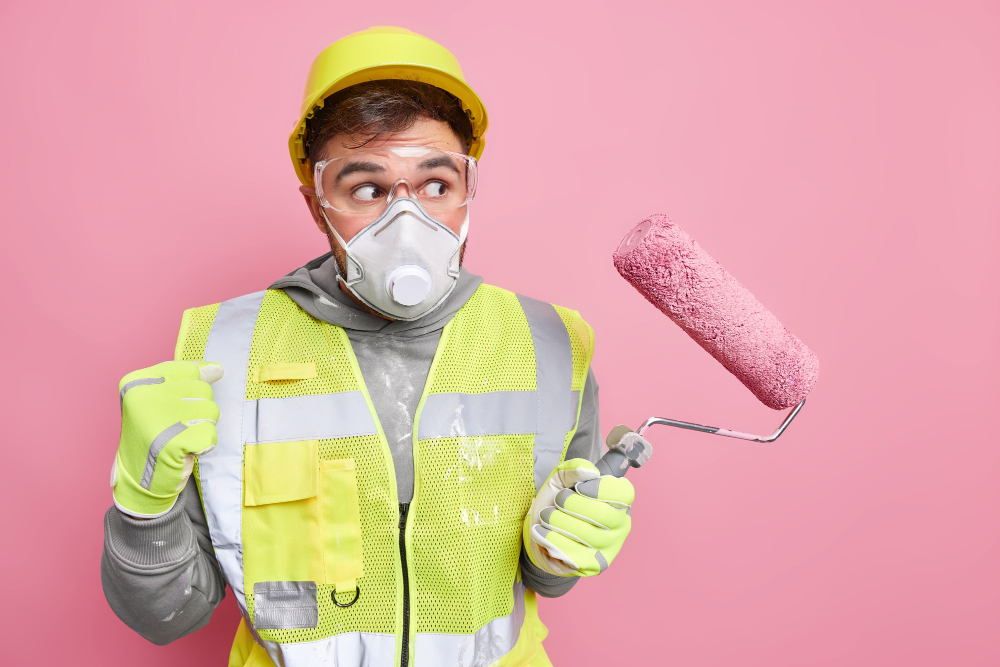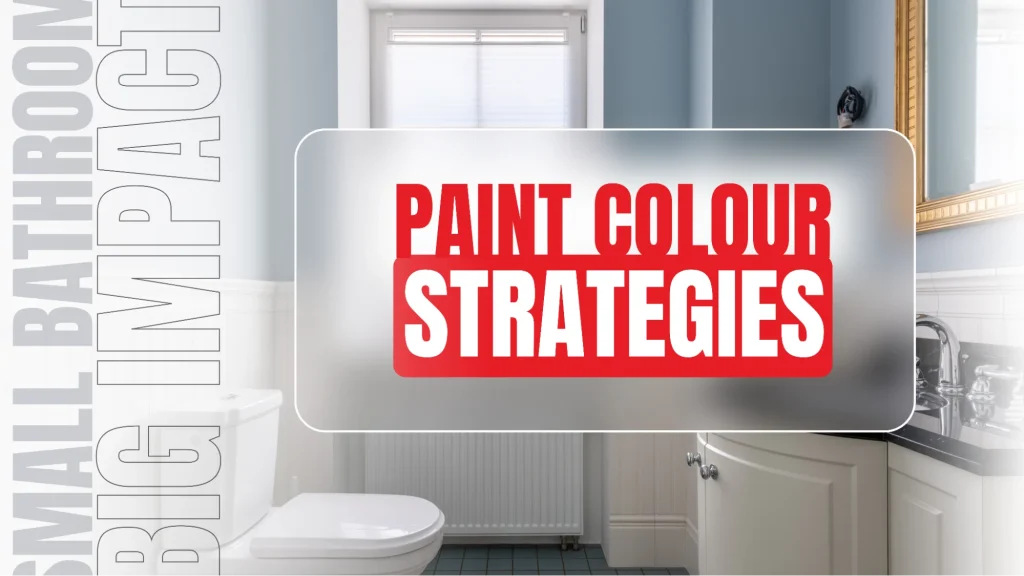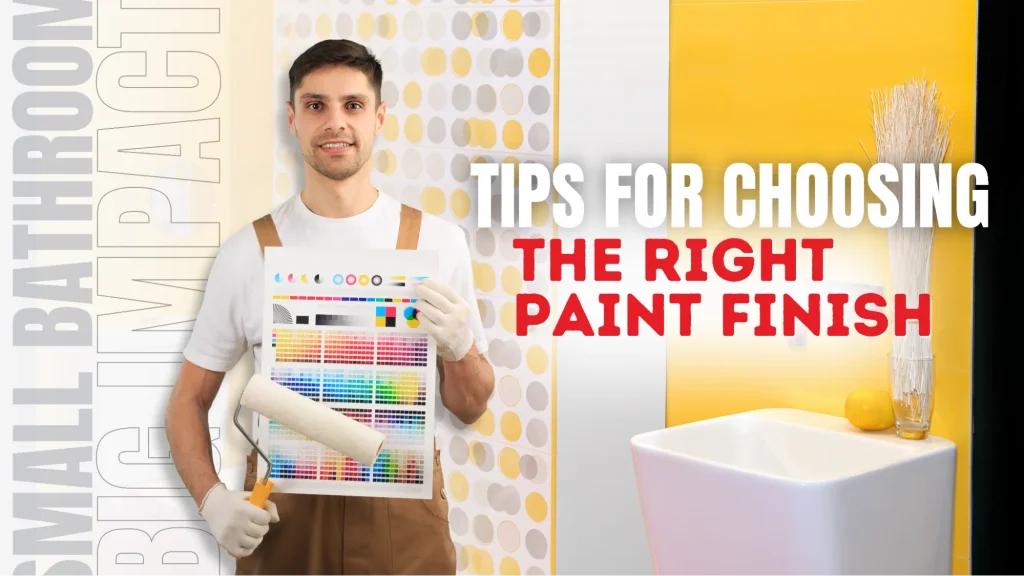
Your home’s protection from water damage depends on a healthy roof. Water getting through the roof can cause structural damage, mould, and indoor air quality issues. Roof paint is a smart way to protect your property from these kinds of dangers.
A lasting, leak-free roof requires knowledge of roof paint kinds, preparation, and application. In this comprehensive blog, we’ll cover roof paint application details to maximise waterproofing to extend your roof’s lifespan and protect your home’s structure.
Understanding Roof Waterproofing
In humid or stormy locations, roof waterproofing becomes essential for home maintenance. Protecting your property from water leaks and structural damage is necessary.
Properly applying roof paint increases protection of your home, as well as extends roof life. Waterproof roofs strengthen structures and also improve interior air quality.
Preventing moisture penetration within your roof improves air quality and respiratory health by reducing mould and mildew development. A well-maintained roof increases your property’s value and curb appeal, house comfort, and safety over time.
Types of Roof Paints
Getting the right roof paint is important for keeping water out and lasting a long time. You should look at a few different options to find the one that fits your roof’s needs.
Here are some roof paint options to consider:
Acrylic Roof Paints
Acrylic roof paints are popular for home redesigns since they are water-resistant and come in many colours and styles. This kind of paint extends concrete, metal, and asphalt roof life by blocking UV radiation and rain.
Acrylic paints offer homeowners like you to choose a weatherproof, stylish coating for your roof. Acrylic paints are waterproof, low-maintenance, and relatively easy to apply.
Considering its versatility, durability, and protection, acrylic roof paints are preferred for residential roof maintenance and improvement.
Bituminous Roof Paints
Asphalt roof coatings, or bituminous roof paints, are useful and popular for waterproofing. Flat and low-slope roofs that store water can benefit from this coating. Weatherproof bituminous roofs resist UV damage, rain, and extreme temperatures.
Through expansion and contraction, bituminous coatings prevent roof fractures and leaks. Since this paint is easy to apply, bituminous roof paint sticks to metal, concrete, and asphalt.
Experts recommend using bituminous roof coatings because of its smooth, long-lasting waterproof layer. Customised waterproof bituminous paints come in many colours and finishes, so don’t forget to seek the best option from professional roof painters.
Elastomeric Roof Paints
Elastomeric roof paints contain polymers that are flexible and can expand. Long-lasting waterproofing and resistance to cracking are guaranteed through their expansion and contraction with the roof.
For complicated roofs with irregular surfaces, elastomeric paints can bridge gaps and seal seams. They are popular for modern roofing systems due to their UV resistance, thermal reflectivity, and energy efficiency.
Choosing the Right Roof Paint
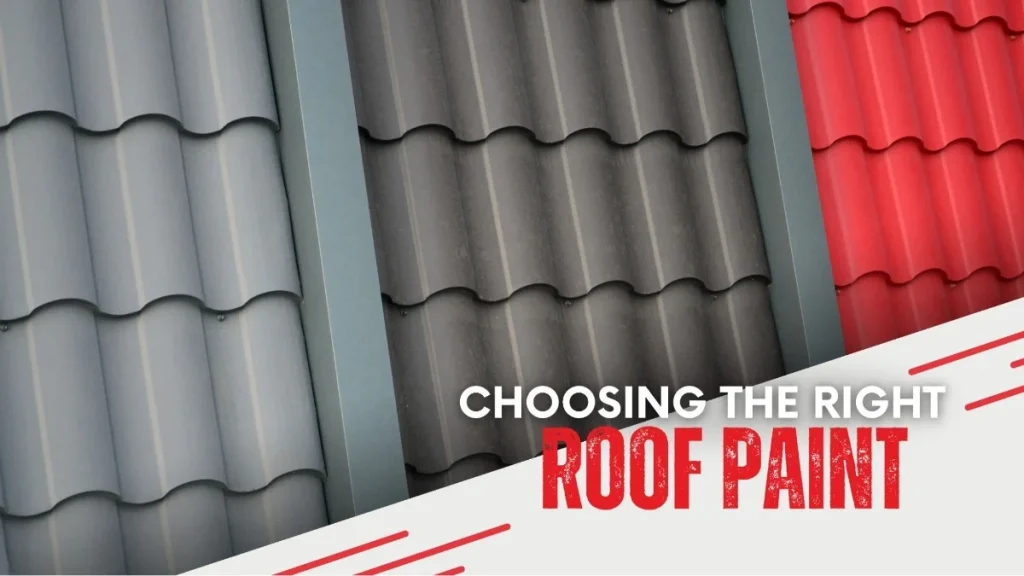
Choosing the right roof paint for long-lasting waterproofing and protection requires research to get the best option.
Here are some factors to consider when choosing a roof paint:
Climate Considerations
Consider local weather conditions, including temperature, humidity, and UV exposure to your roof. A roof paint developed to withstand local weather patterns can last longer and protect your roof from environmental elements.
Roof Material Compatibility
Choose a colour that matches your roof’s metal, concrete, tile, or asphalt properties. For best protection and adherence, different roof materials may require different paints.
To ensure durability and weatherproofing, check the paint’s compatibility with your roof material. Experts can help you choose the right paint for your roof, so consider seeking professional advice to avoid redoing things.
Colour and Finish Options
Consider the colour and style of roof paint. Paint your property a colour that complements its exterior and improves its street appeal. It’s also important to choose a finish that will blend with the gloss or colour you chose and has long-lasting water resistance.
Durability and Warranty
Invest in a high quality roof paint which provides long-lasting durability and includes manufacturer-provided protection. Premium paints are created with top-quality chemicals, offer waterproofing, UV protection, and fade resistance for better longevity and performance.
Applying Roof Paint Correctly
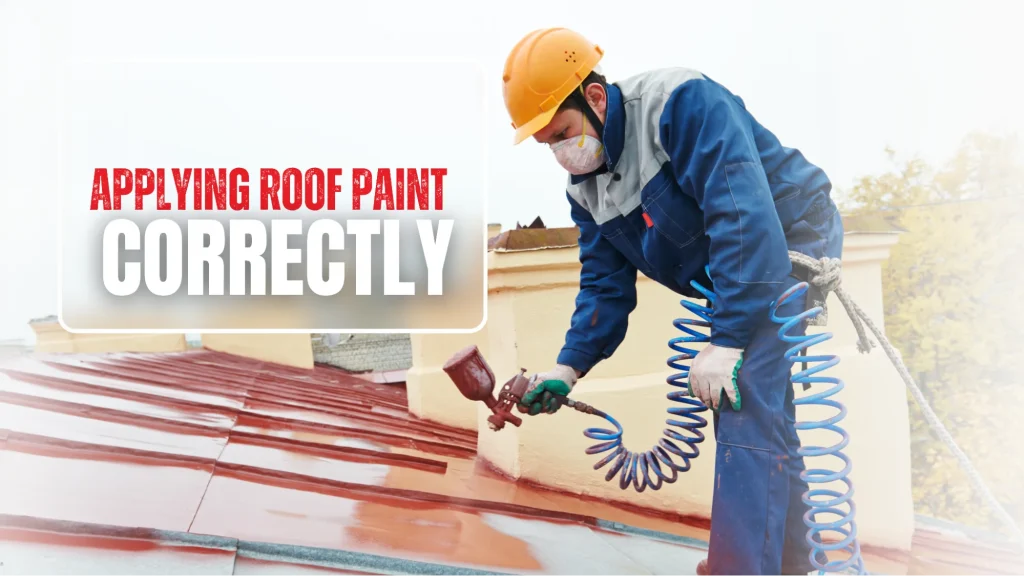
It is very important to apply roof paint correctly so that it waterproofs well and lasts a long time. Do-it-yourself projects can be fun, but if the job is complicated or takes a long time, you might want to hire a roof painting specialist.
For the right way to paint your roof, consider these steps:
Tools and Equipment
Gather all of the tools and equipment you will need to paint the roof. Some of these are:
- Tools for cleaning
- Extension bars with rollers
- Paint bowls
- Safety gear like masks and gloves
- A strong ladder or scaffolding to get to the roof
If you have the right tools, painting will go smoothly and quickly. For bigger or more complicated jobs, you might want to engage with professional roof painters since they have access to more advanced paintwork tools.
Surface Preparation
Before painting, the roof must be properly prepared. Remove dirt, debris, and loose material from the roof surface with a power washer or stiff brush and a cleaning solution.
Dry the area before continuing. Next, apply sealant or patch fractures or holes to make the surface smooth.
For complex roof structures or major restorations, expert help may be needed for optimal surface preparation and paint application. A good roof paint job and proper preparation help the waterproofing treatment last, which will save you money in the long run.
Mixing and Dilution
Follow the roof paint mixing and diluting directions if the manufacturer specifies them. Diluting the paint with water or a solvent may obtain the desired consistency. Use a clean container and swirl the paint well to avoid lumps.
Licensed roof painters can mix and apply paints correctly for uniform, long-lasting effects. Their expertise prepares and applies paint optimally, improving the effectiveness and durability of your roof waterproofing solution.
Application Techniques
Using specific techniques while applying roof paint yields best results. Start at one end of the roof and work your way to the other to ensure full coverage and consistency.
Apply paint evenly with lengthy, overlapping strokes for a seamless finish. Maintain a uniform paint thickness to eliminate drips, runs, and puddles that can lower application quality and waterproofing.
Make sure roof seams and edges are well-painted to prevent moisture entry.
Final Inspection
After applying the last coat of paint, inspect the roof thoroughly. Look for missed spots, uneven surfaces, and defects that need touch-ups. Addressing these concerns quickly guarantees a uniform, waterproof finish, extending paint job’s life expectancy.
Curing and Maintenance
Roof paint requires proper curing and upkeep to last. To maintain the painted roof’s waterproofing, inspect it regularly for wear, damage, and water infiltration and fix any faults.
For paint protection, use mild detergent or a roof cleaning solution with a soft brush or sponge to clean the painted surface, then rinse and dry before maintenance or repairs.
Final Thoughts
Proper roof paint application is important to maximise waterproofing and roof durability. The careful collection of tools and equipment and extensive roof surface preparation are essential to building a strong and durable waterproofing barrier.
Following manufacturer mixing, dilution, and application instructions improves paint performance and provides a smooth finish .Properly applied coats of paint provide exceptional waterproofing and weather protection. A thorough final inspection is also needed to find any overlooked spots and ensure a seamless, waterproof finish.
DIY roof painting can be enjoyable, but complex or extensive tasks may call for professional help. A One Korean Painting is a top-rated painting company with extensive roof painting and maintenance experience.
Our experts will handle curing and maintenance for maximum roof paint performance and accurate application. If you’re looking for a reliable partner for a waterproof and durable roof, contact A One Korean Painting today for a FREE quote!


